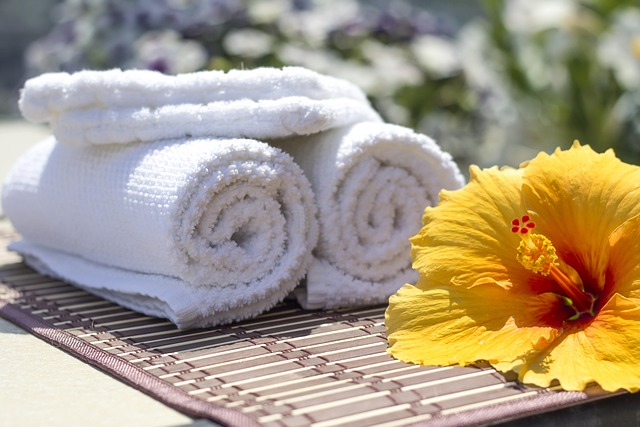In Northglenn's cold winters, proactive winter tree care is key to preserving urban forest health. This includes balanced fertilization, proper pruning, deep watering, and protective coatings to prevent root damage, fungal infections, and stress-related diseases. Promptly treat symptoms like discolored leaves or oozing bark with professional guidance, including fungicides/bactericides, and monitor improvements while protecting trees from extreme cold.
Winter can be a harsh season for trees in Northglenn, Colorado, leading to various diseases that require careful attention. Understanding common winter ailments is essential for homeowners and arborists alike to maintain healthy trees. This guide offers valuable insights into effective disease prevention strategies tailored for the unique challenges of the Colorado climate. Learn how to identify, treat, and manage tree illnesses with a step-by-step approach, ensuring your Northglenn trees thrive year-round.
- Understanding Common Winter Tree Diseases in Northglenn
- Creating an Effective Disease Prevention Strategy
- Treating and Managing Tree Illnesses: A Step-by-Step Guide
Understanding Common Winter Tree Diseases in Northglenn

In the colder months, trees in Northglenn, Colorado, face unique challenges that can lead to various diseases. Understanding common winter tree issues is essential for effective maintenance and preservation of your urban forest. The harsh winters with freezing temperatures, snow, and strong winds create a stressful environment for many species. One of the primary concerns is root damage due to icy soil, which can weaken trees and make them susceptible to fungal infections when spring arrives.
Winter tree care tips specific to the Colorado climate are vital for residents in Northglenn. Proper pruning during dormancy helps remove dead or diseased branches and improves air circulation, reducing moisture build-up that fosters fungal growth. Additionally, applying protective coatings or sealing wounds on trees can provide insulation against extreme cold and prevent entry points for pathogens. Regular monitoring for early signs of distress is key to implementing effective disease treatment plans.
Creating an Effective Disease Prevention Strategy

In the world of winter tree care, especially in Colorado’s unique Northglenn climate, preventing diseases is just as crucial as treating them. A proactive approach begins with understanding your tree species and their specific needs during the colder months. One effective strategy involves creating a balanced fertilization program tailored to the tree’s requirements; this helps strengthen its natural defenses against pathogens. Additionally, proper pruning techniques are essential; removing dead or diseased branches prevents the spread of infections and encourages new growth.
Regular deep watering during dry spells is another vital component of disease prevention. Trees with adequate moisture are better equipped to withstand stressful conditions. As winter sets in, consider applying protective coatings or sealants to tree wounds and cuts, blocking entry points for fungi and bacteria. Remember that these measures are key components of a comprehensive Winter tree care tips for the Colorado climate in Northglenn regimen, ensuring your trees remain healthy and vibrant year-round.
Treating and Managing Tree Illnesses: A Step-by-Step Guide

Treating and managing tree illnesses requires a systematic approach, especially in the unique winter conditions of Colorado’s Northglenn climate. Here’s a step-by-step guide to help you address these issues effectively:
1. Identify the Problem: Start by recognizing the specific symptoms displayed by your trees, such as discolored leaves, unusual growth patterns, or abnormal oozing bark. These clues will indicate whether the issue is fungal, bacterial, or insect-related.
2. Consult a Professional: Given the complexity of tree diseases, it’s advisable to seek advice from an arborist or tree care specialist familiar with the local ecosystem and weather patterns. They can provide accurate diagnoses and tailored treatment plans for your trees.
3. Create a Treatment Plan: Based on the identification, develop a strategy that may include pruning infected branches, applying fungicides or bactericides, or using insecticidal treatments. In winter, focus on protecting trees from severe cold and snow, as these conditions can exacerbate existing issues. Use winter tree care tips specific to Northglenn’s climate, ensuring your chosen methods are safe for both the trees and local wildlife.
4. Implement and Monitor: Carry out the treatment plan promptly, following all safety guidelines and manufacturer instructions for products used. Regularly monitor the trees post-treatment, observing for any improvements or new symptoms.
In the context of Winter tree care tips tailored to the Colorado climate in Northglenn, understanding and proactively addressing common winter tree diseases is essential. By implementing a robust disease prevention strategy, as discussed, residents can significantly enhance their urban forest’s health and resilience. Moreover, following the step-by-step guide for treating and managing illnesses ensures that trees receive the care they need to thrive year-round. Armed with knowledge and proper techniques, Northglenn communities can foster a vibrant and thriving urban forest landscape.
